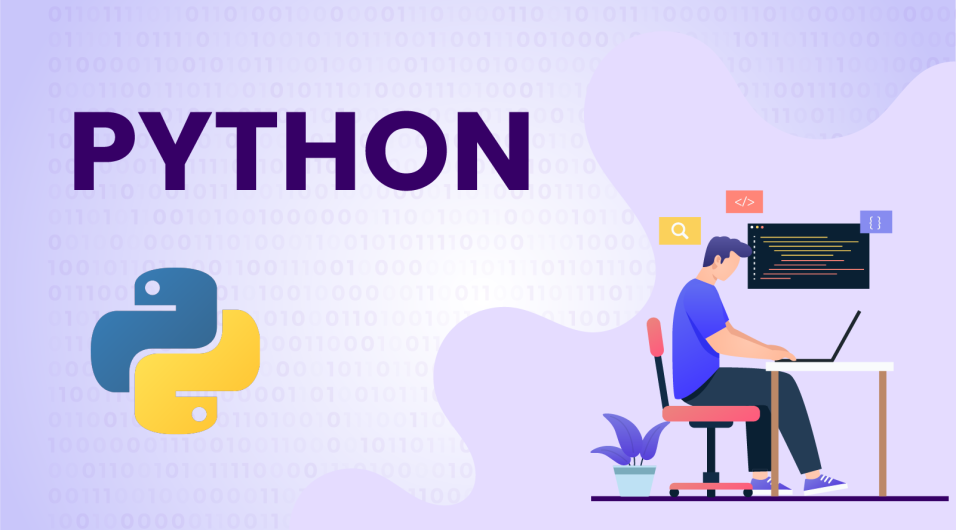
A Comparative Analysis of its Popularity and Advantages
The evolution and impact of the Python programming language in modern IT systems have been a subject of significant interest and study. Python, known for its simplicity and versatility, has become one of the most popular programming languages in the industry. This research paper delves into the historical development of Python, tracing its origins and major milestones, and examining how it has evolved to its current version. Additionally, the paper explores the factors that have contributed to Python's widespread adoption in modern IT systems, comparing its popularity to other programming languages and identifying key industries where Python is predominantly used. Furthermore, the paper discusses the advantages of Python in software development, highlighting its features that enhance productivity and showcasing successful projects built using Python. A comparative analysis with other programming languages such as Java and C++ is also presented, focusing on syntax, readability, and performance differences. Looking towards the future, the paper examines anticipated developments for Python, the contributions of the Python community to its evolution, and the role Python is expected to play in emerging technologies like AI and machine learning. Through this comprehensive analysis, this research paper aims to provide valuable insights into the significance of Python in the ever-evolving landscape of IT systems.
Historical Development of Python Programming Language
How did Python originate and who were its primary developers?
Python's origin story is deeply intertwined with the vision and efforts of its principal creator, Guido van Rossum. Conceived in the late 1980s, Guido aimed to develop a programming language that prioritized readability and ease of use, distinguishing it from other languages of the time. This vision materialized into Python, which was officially released by Guido himself . However, the evolution of Python cannot be attributed solely to Guido. The collaborative dynamics within the Python community have played a pivotal role in its continuous development and adaptation. The community-driven approach ensured that Python evolved by incorporating diverse perspectives and addressing the needs of a broad user base. The establishment of the Python Software Foundation (PSF) in 2001 further institutionalized this collaborative ethos, providing a structured framework for managing Python-related intellectual property and supporting its development. The PSF's support has been crucial in sustaining Python's growth, allowing it to remain a powerful and easy-to-learn programming language that continues to attract both new learners and experienced developers. This cohesive blend of visionary leadership and community collaboration underscores the unique trajectory of Python's development and its enduring relevance in the programming world.
What were the major milestones in Python's development timeline?
The release of Python 1.0 in 1994 marked a significant milestone in the language's development, establishing it as a full-fledged programming language with a strong and dedicated community. This version was a defining moment because it introduced modules, exceptions, and an extensive standard library, which significantly enhanced Python's functionality, usability, and overall appeal. These key features laid the groundwork for Python's continued growth and set the stage for remarkable advancements and innovations that would follow in subsequent versions. The commitment to readability, simplicity, and code maintainability that Python embraced from its inception further contributed to its success, attracting a growing number of developers who valued these principles. As Python evolved, it transitioned from a hobby project during Guido van Rossum's Christmas break into a powerful and versatile programming language, driven by its community-centric development process and the formation of the PSF. The period following Python 1.0 saw additional key releases such as Python 1.6 and Python 2.0, which continued to refine and expand the language's capabilities, cementing Python's position in the programming landscape.
How has Python evolved from its initial version to the current version?
The transition from Python 2 to Python 3 represents one of the most pivotal shifts in the language's evolution, highlighting the community's commitment to adaptability and continuous improvement. This transition was driven by the need to rectify fundamental design flaws and enhance the language's syntax and features, ensuring Python remained relevant and efficient for modern software development needs. Central to this evolution was the collaborative dynamics within the Python community, particularly the role of Python Enhancement Proposals (PEPs). These community-driven decision-making processes exemplify the collective intelligence that has been instrumental in shaping Python's trajectory. Additionally, Guido van Rossum's unwavering vision for a readable and accessible language has been realized, further solidifying Python's widespread adoption and popularity. This community-centric approach not only facilitated the smooth transition between major versions but also fostered a culture of innovation and collaboration that continues to propel Python forward. Consequently, the story of Python's evolution remains an ongoing narrative, leaving an indelible mark on the world of software development.
Popularity of Python in Modern IT Systems
What factors have contributed to the widespread adoption of Python?
One of the key factors that have contributed to the widespread adoption of Python is its inherent simplicity and readability, which make it exceptionally beginner-friendly and easy to learn. Unlike other programming languages that often have steep learning curves, Python's straightforward syntax allows new programmers to quickly grasp programming concepts and start developing projects. This ease of use is further enhanced by Python's high-level nature, which abstracts many of the complex details of computer hardware and memory management, enabling developers to focus more on solving problems rather than getting bogged down by low-level technicalities. Additionally, Python's strong community support and active ecosystem play a significant role in its adoption. The extensive availability of resources, tutorials, and forums where developers can seek help and share knowledge fosters a collaborative learning environment. This community-driven approach not only helps beginners but also supports experienced developers in keeping up with the latest advancements and best practices in Python programming. Consequently, Python's simplicity, combined with robust community support and an active ecosystem, has created a conducive environment for widespread adoption across various levels of expertise.
How does Python's popularity compare to other programming languages in current use?
Python's popularity has surged over the years, surpassing many other programming languages due to its versatility and ease of use. This rise can be attributed to various factors, one of which is its extensive library support that simplifies complex tasks for developers. For instance, Python's libraries such as NumPy, pandas, and Matplotlib have revolutionized data science by enabling efficient data manipulation and visualization, making it a preferred language in this domain. Moreover, its dominance in machine learning is evident as it provides robust libraries like TensorFlow and scikit-learn, which have become integral tools for developing machine learning models. Python's adaptability extends to web development as well, with frameworks like Django and Flask being widely used to build sophisticated websites, including high-traffic platforms like Instagram and Spotify. This comprehensive range of applications underscores Python's status as the most advanced programming language for computer science applications. Consequently, Python's user base has grown significantly, from 32% in 2017 to 41.7% in 2019, reflecting its increasing popularity among developers. This upward trend is further supported by statistical data, highlighting Python's continual rise in the programming community. As Python continues to evolve, it is likely to maintain its relevance and preference among developers, reinforcing the need for ongoing support and innovation in its ecosystem to meet future technological demands.
What are some key industries or sectors where Python is predominantly used?
One of the key industries where Python has seen substantial adoption is web development. Python's simplicity and readability have made it a favorite among developers for building dynamic websites and web applications. Frameworks such as Django and Flask, which are built on Python, provide robust tools for creating scalable web solutions. This ease of use extends to system administration, where Python scripts are commonly employed to automate routine tasks, manage server environments, and streamline workflows. Additionally, the rise of data science and machine learning has further cemented Python's dominance. Its extensive libraries, such as NumPy, Pandas, and TensorFlow, enable data analysts and researchers to handle large datasets, perform complex calculations, and develop sophisticated machine learning models. Python is also prevalent in educational institutions, being the most popular language for introductory computer science courses at top universities, thereby ensuring a steady stream of new developers proficient in Python. The interconnection between these domains—web development, system administration, and data science—illustrates Python's versatility and its ability to cater to the diverse needs of the modern technological landscape. As Python continues to evolve, its influence across these sectors is likely to grow, driving further innovation and efficiency in both current and emerging fields.
Advantages of Python in Software Development
What are the primary features of Python that make it advantageous for developers?
One of the primary features that make Python advantageous for developers is its extensive support through standard libraries, which enable it to be utilized for a wide range of applications, from web development to data analysis and scientific computing. Furthermore, Python's simple and readable syntax not only lowers the barrier to entry for beginners but also enhances productivity and efficiency for experienced developers. This clear syntax is complemented by Python's high-level, object-oriented nature, making it a powerful tool for general-purpose programming and suitable for individuals who are learning programming for the first time. Additionally, Python's dynamic typing allows developers to write flexible and concise code, which can adapt to different types without requiring explicit declarations. The combination of these features underscores Python's popularity and rapid growth in recent years, establishing it as a dominant language in the developer community. To maximize these advantages, it is essential for developers to explore the full range of Python's capabilities and stay updated with the latest advancements introduced in Python 3.
How does Python enhance productivity compared to other languages?
Python's design philosophy emphasizes code readability and simplicity, which significantly enhances productivity for developers. Unlike languages with more complex syntaxes, Python's syntax is clear and accessible, reducing the learning curve for new programmers and allowing experienced developers to write and debug code more quickly. Additionally, Python offers platform independence, which means that developers can write code on one operating system and run it on another without modification. This cross-platform capability is invaluable in modern software development, where applications often need to operate across diverse environments. Furthermore, Python's extensive standard library provides a rich set of modules and functions, enabling developers to implement complex functionalities with minimal code. This extensive library support not only speeds up the development process but also helps ensure that the code is robust and reliable [11]. To maximize productivity, however, developers must transition from Python 2 to Python 3 to leverage new features and improvements that enhance both performance and security. Hence, fostering an environment that encourages the adoption of Python 3 is crucial for maintaining Python's edge in boosting productivity.
What are some examples of successful projects or applications built using Python?
One of the most notable examples of successful projects built using Python is the development of the YouTube platform. Initially created using Python, YouTube's choice of this language allowed for rapid development and scalability, which were crucial for managing the vast amounts of data and user interactions the platform encounters daily. Similarly, Python's platform independence has been pivotal in the success of Dropbox, a widely-used cloud storage service. Dropbox's backend is predominantly written in Python, enabling seamless operation across different operating systems and facilitating the synchronization of files between various devices. The transition from Python 2 to Python 3 remains a subject of interest in these projects, as developers seek to leverage the enhanced features and performance improvements offered by the newer version. However, the shift has been gradual, with many legacy systems still operating on Python 2 due to compatibility and resource constraints. These examples underscore the versatility and robustness of Python in handling diverse and complex applications, highlighting its essential role in contemporary software development.
Comparative Analysis of Python with Other Programming Languages
How does Python's syntax and readability compare to languages like Java and C++?
When examining Python's syntax and readability, it is evident that Python offers a significant advantage in simplicity and clarity over languages like Java and C++. Python's syntax is designed to be clean and easy to understand, which reduces the cognitive load on developers and allows them to write code more efficiently. This readability stems from Python's use of indentation to define code blocks, as opposed to the curly braces used in C++ and Java, which can lead to more visually cluttered code. Furthermore, Python's dynamic typing system eliminates the need for explicit type declarations, in contrast to the strongly typed nature of Java and C++, making the code more concise and less error-prone. Another aspect enhancing Python's readability is its extensive standard library, which provides a broad range of modules and functions that simplify common programming tasks, reducing the need for verbose code. While Python's interpreted nature may result in lower execution speed compared to compiled languages like C++ and Java, the trade-off is often considered worthwhile for the increased productivity and ease of use it provides. Therefore, Python's syntax and readability not only make it an attractive choice for beginners but also a powerful tool for experienced developers working on complex projects.
What are the performance differences between Python and other high-level languages?
Despite its widespread adoption and the high level of abstraction it offers, Python has historically been criticized for its performance limitations, especially when compared to languages like C or C++. This performance disparity can be attributed to several factors, including Python's nature as an interpreted language, which inherently carries more runtime overhead and often results in higher CPU usage. In contrast, languages like C and C++ are compiled directly to machine code, allowing them to execute more efficiently and with less overhead, thereby offering a significant performance advantage in scenarios where every bit of computational power is critical. However, the performance gap has been narrowing due to the introduction of optimized libraries and tools such as NumPy, Pandas, and Cython, which leverage lower-level languages to enhance Python’s execution speed. These advancements enable Python to achieve performance levels that are comparable to those of traditionally faster languages in many practical applications. Despite these optimizations, Python's inherent design as a high-level, interpreted language means that it will likely always carry some performance trade-offs compared to low-level, compiled languages. As such, the choice between Python and other high-level languages like Java or C++ often depends on the specific requirements of the project, particularly when execution speed is a critical consideration. Therefore, while Python's ease of use and extensive library support make it a versatile choice for many applications, developers must weigh these benefits against the potential need for higher performance, particularly in resource-intensive environments.
In what scenarios might a developer choose Python over another language, and vice versa?
With Python's foundation firmly established, developers often find themselves choosing Python over other languages for several compelling reasons. One significant factor is Python's reputation as a developer-friendly language, which contributes to its widespread adoption in various domains. This ease of use is especially beneficial in scenarios requiring rapid development and prototyping, making Python an excellent choice for startups and small projects. Furthermore, Python's capability to integrate seamlessly with other languages and technologies is particularly advantageous for projects that necessitate a multi-technology stack [25]. This integration flexibility ensures that developers can leverage Python alongside other languages to maximize performance and functionality [24]. Additionally, Python's versatility in supporting both object-oriented and procedural programming modes makes it suitable for a wide range of applications, from simple scripts to complex systems. This flexibility, coupled with its robust data type support, positions Python as a preferred language for tasks like exploratory data analysis. In conclusion, Python's combination of developer-friendliness, integration capability, and programming versatility makes it a strong candidate for many modern software projects, emphasizing the need for careful consideration of the specific project requirements when choosing a programming language.
Future Trends and Developments in Python
What are the anticipated future developments or updates for Python?
The anticipated future developments for Python are poised to significantly impact the fields of Big Data and Artificial Intelligence (AI), leveraging its already established popularity and versatility. Python's increasing prominence in Big Data can be attributed to its exceptional ability to parse and analyze large datasets efficiently, supported by robust libraries and tools designed for these purposes. Additionally, Python's extensive suite of libraries such as TensorFlow and PyTorch has cemented its status as the language of choice for AI and machine learning applications, enabling advanced scientific computations and the development of complex algorithms. This dominance is further reinforced by the continuous enhancement of computational capabilities through advancements in CPU and GPU technology, which alongside the growth of user communities and libraries, ensures that Python will remain a cornerstone of scientific computing for the foreseeable future. Moreover, the integration of probabilistic programming frameworks like Pyro and NumPyro, which facilitate the implementation of probabilistic models in deep learning, signifies Python's pivotal role in cutting-edge AI research and development. As a result, Python's trajectory suggests a future where its role in AI and data science will only deepen, driven by ongoing innovations and the collaborative efforts of its user base. This necessitates continued investment in developing performant and user-friendly libraries to support the evolving needs of scientific computing and machine learning researchers.
How is the Python community contributing to its ongoing evolution?
The Python community's contribution to its ongoing evolution is multifaceted, encompassing widespread adoption by major companies, robust support from online communities, and significant integration into academic curricula. Prominent tech giants like IBM, Google, NASA, and Microsoft have leveraged Python's capabilities, which in turn has fueled its development and enhancement through real-world applications and requirements. This widespread corporate adoption is mirrored by its ranking as a top language in various industry surveys and studies, illustrating its sustained relevance and growth within the programming community. Additionally, extensive support from online communities has played a crucial role in Python's evolution. These communities facilitate the sharing of knowledge, tools, and best practices, making it easier for developers to innovate and solve complex problems collaboratively. Educational institutions have also recognized Python's value, increasingly incorporating it into their curricula. For instance, it has become a standard introductory programming language in many universities' computer science departments, reflecting its importance in foundational programming education. This academic integration not only prepares the next generation of developers but also contributes to the language's continuous improvement as students and educators alike contribute new insights and advancements. Thus, the interplay between corporate use, online community support, and academic integration underscores a comprehensive ecosystem that drives Python's ongoing evolution.
What role will Python play in emerging technologies such as AI and machine learning?
Building on its solid foundation, Python has evolved to play a pivotal role in the realm of emerging technologies, particularly in artificial intelligence (AI) and machine learning. The language's versatility and simplicity have made it the preferred choice for researchers and developers alike, allowing for the automation and augmentation of tedious tasks in computer programming. This capability is critical in AI and machine learning, where the need for efficient and scalable solutions is paramount. Python’s integration into AI research and the development of machine learning models has been profound, with the language being routinely used to design sophisticated algorithms and computer models for tasks such as pattern recognition. This is further evidenced by its application in developing computer programs and machines capable of performing tasks traditionally dominated by human intelligence[28]. Additionally, the advent of GPU-accelerated training of deep neural networks (DNNs) has been significantly bolstered by Python, which facilitates the efficient processing of large datasets and complex computational tasks required in deep learning[29]. As a result, Python not only enhances the performance and productivity of AI systems but also democratizes the field by lowering the barriers to entry for non-experts and accelerating the development pipeline for seasoned engineers[29]. Given these developments, it is clear that Python will continue to be an indispensable tool in the advancement of AI and machine learning, driving innovation and enabling new breakthroughs in these rapidly evolving fields.
The evolution and impact of the Python programming language in modern IT systems have been a subject of extensive analysis in this research paper. The collaborative and community-driven approach that Python has embraced since its inception has been crucial in shaping its trajectory and solidifying its position as one of the most popular programming languages today. The establishment of the Python Software Foundation (PSF) in 2001 further institutionalized this collaborative ethos, providing a structured framework for managing Python-related intellectual property and supporting its ongoing development. The vision and efforts of Guido van Rossum, the principal creator of Python, have been instrumental in defining the language's design philosophy, emphasizing readability, simplicity, and ease of use. The continuous development and adaptation of Python, highlighted by key releases such as Python 1.0, Python 1.6, and Python 2.0, have expanded its functionality and appeal, attracting both new learners and experienced developers. Python's dominance in machine learning and data science is evident through its robust libraries such as TensorFlow, NumPy, and pandas, which have revolutionized the field by enabling efficient data manipulation, visualization, and the development of sophisticated machine learning models. The language's extensive library support simplifies complex tasks for developers, making it a preferred choice in AI research and the development of machine learning algorithms. The transition from Python 2 to Python 3 represented a pivotal shift in the language's evolution, underscoring the community's commitment to adaptability and continuous improvement. The simplicity and readability of Python's syntax have contributed to its widespread adoption across various levels of expertise, from beginners to experienced programmers. Its platform independence and extensive standard library provide developers with a rich set of modules and functions, enabling them to implement complex functionalities with minimal code. The collaborative dynamics within the Python community, exemplified by Python Enhancement Proposals (PEPs) and community-driven decision-making processes, have been instrumental in shaping Python's trajectory and fostering a collaborative learning environment for developers. The rise of Python as the most advanced programming language for computer science applications can be attributed to its unique blend of visionary leadership, community collaboration, and adaptability to modern software development needs. In conclusion, the ongoing narrative of Python's evolution leaves an indelible mark on the world of software development, driven by its simplicity, versatility, and community-driven development processes. The discussion presented in this research paper underscores the importance of Python's evolution and impact in modern IT systems, highlighting its key advantages and popularity among developers worldwide. Future research directions may







